The dream to hit a $5-trillion Indian economy is still alive. It was expected to happen in 2025, but then Covid-19 came and ravaged the path. But, green shoots are beginning to appear even though the number of sceptics questioning a quick recovery is also rising by the day. For long-term investors, these are trying times. Things appear at the cross-roads. Noise levels have risen sharply. At these times, it pays to remain focused and fixed on your investment goal. Those who can keep their eye on the big picture will win hands down. Those who adjust at the slightest discomfort will remain unhappy. In an exclusive webinar with PMS Bazaar, Madanagopal Ramu, Fund manager - Equity, Sundaram Alternates talks about 3 long term investing themes. Read on to know more...
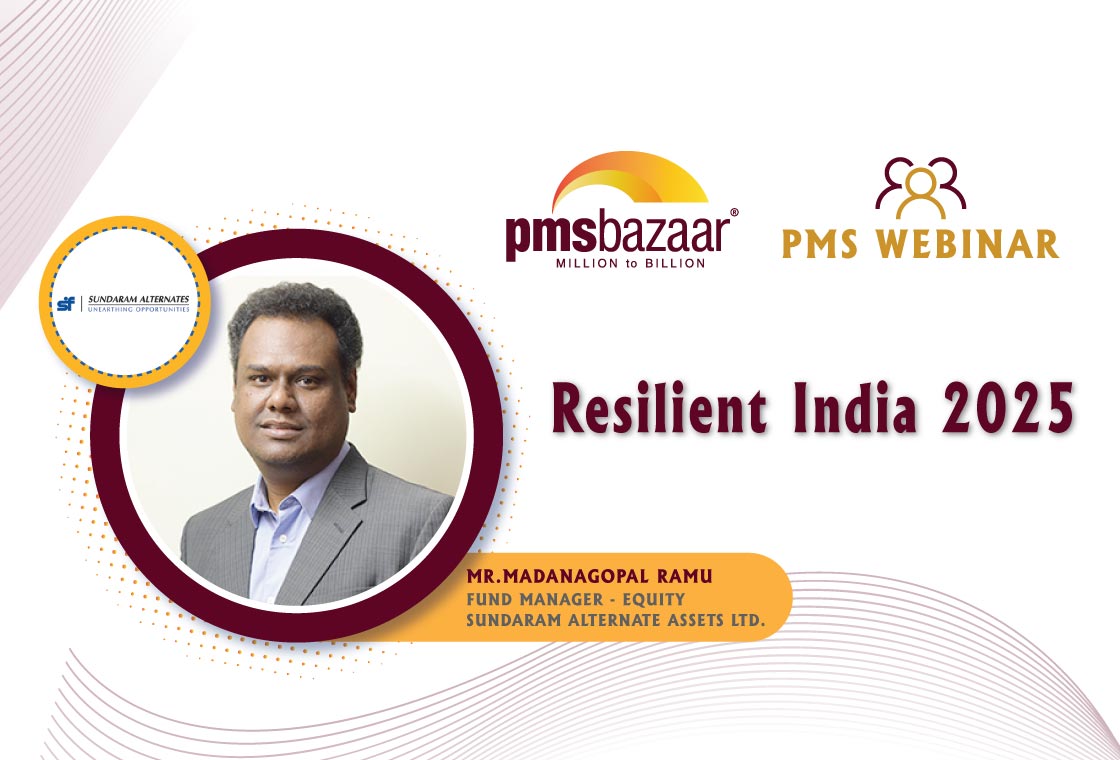
Consumer Discretionary
One of the things that every investor needs to remember is earnings potential. Valuations, regulations, market mood etc. usually get a disproportionate amount of attention. "Earnings potential and earnings growth are very important to me. I look at them very closely. Our task as a portfolio manager is to grow the wealth of investors. If the plan is to double money in 4-5 years, earnings should be able to take care of that," says Ramu, who has around 14 years of experience in the Indian financial markets.
Outlining the 3 investing themes that will work for investors eyeing 2025 and beyond, Sundaram Alternates talked about: Consumer Discretionary, Financials and Make In India.
Though consumer discretionary is not a new theme, it will remain intact for the long-term. "Disposable incomes are to grow exponentially. Uptrending of consumption will happen. We feel compared to FMCG, consumer discretionary is the area to invest. A large proportion of India's middle income (Rs 4 lakh to Rs 10 lakh per annum) are likely to double from 5-6 crore to 10-12 crore in next few years," opines Ramu, adding that households will incrementally spend more on consumer discretionary items than staples.
This anticipated pace of growth is similar to what China witnessed in the last 10 years. "I am comparing with China but I am mindful of the fact that India may not have such a huge trajectory. Our income growth can be very different. At 6-7% annual GDP growth, consumer discretionary products are expected to grow at lower double digit percentage," feels the fund manager, who currently manages an AUM of over Rs 1,800 crore.
India is likely to be the next growth market for products like room ACs, branded apparels, fridges, washing machines, QSR chains etc. Within consumption, C.H.I.P is a buzzword. C stands for convenience, H for health, I for impulse and P for premiumization. "This is not just an urban centric theme. We expect the top 100 cities to show these trends," he said.
Financials
Even after the correction and swift recovery, the importance of Financials as a sector has not reduced one bit. With fears of a prolonged slowdown, some investors have taken a negative view. But for a growing economy like India, BFSI remains a critical engine of growth. Without financials, nothing can happen in a big way.
"Private banks are consistently gaining market share. Adequate capital and profitability is leading to sustained growth. If India moves to a 30% retail credit of GDP kind of position, the pace of growth will be fast," says Madanagopal Ramu, for whom the financial sector is a long term structural bet.
Discarding the temporary investor worries and concerns, the fund manager says if the Indian GDP growth rate is 6 to 7%, this will generally translate to 9-10% credit growth. "Interestingly, 45 to 50% of the banking system will not grow due to PSU banks being gripped by NPA issues etc. Naturally, it will provide a great opportunity for private sector banks to grow. Those who are well capitalized and funded will chase growth," says qualified cost accountant, who also has a management degree from BIM Trichy.
It is important to be selective in financials despite the over-arching growth potential. Sundaram Alternates uses quality filters for financials like RoA (Return on Assets) more than 1.5%, RoE (Return on Equity) more than 15%, stable credit cost and below 1.5% (sign of underwriting capability). "We avoid Microfinance which is high risk leading to increasing capital requirement. Housing finance companies or HFCs are seeing consistent fall in spreads. PSU banks are focusing all energies on the salaried borrowers taking mortgage, which is increasing competition. Another area to avoid is developer financing which is undergoing a cyclical downturn," Ramu avers.
Make In India
It may be too early to call a 'manufacturing renaissance', but there are signs of Make In India being given a big thrust. Targeted efforts from the government to address long pending issues around land, labour, expensive capital, infrastructure have been happening.
The Make In India scheme is seen benefiting from shifting supply chains from elsewhere to the country. "Yes, we have seen continuous degrowth for manufacturing of late. No doubt it has been a tough period. The good news is that there are signs that the government is focusing on getting manufacturing back in mobiles, TVs, ACs, cameras, washing machines, fridges etc. Incentive schemes will promote localization," says the fund manager.
If manufacturing is making a comeback, even over the long-term, the focus will be on Consumer Electronics, Chemicals and Autos will be focus areas.
As India aims to curtail imports, most imports are not hi-tech and could be localized, India is also aiming to step-up exports and has taken a targeted approach this time. "This theme is a multi-year one. Not just from the economic standpoint, many individual companies and earnings will benefit from Make in India. We have positioned our SISOP and SELF portfolios to take advantage of these 3 major investing themes," he signed off.
Those who missed the opportunity to hear from the expert directly can listen to the entire session through the link appended below
For more information, please contact info@pmsbazaar.com
Recent Blogs

MICRO CAPS: The Dark Horses of the Indian Equity Market
PMS Bazaar recently organized a webinar titled “MICRO CAPS: The Dark Horses of the Indian Equity Market,” which featured Mr. Rishi Agarwal and Mr. Adheesh Kabra, both Co-Founders and Fund Managers, Aarth AIF. This blog covers the important points shared in this insightful webinar.
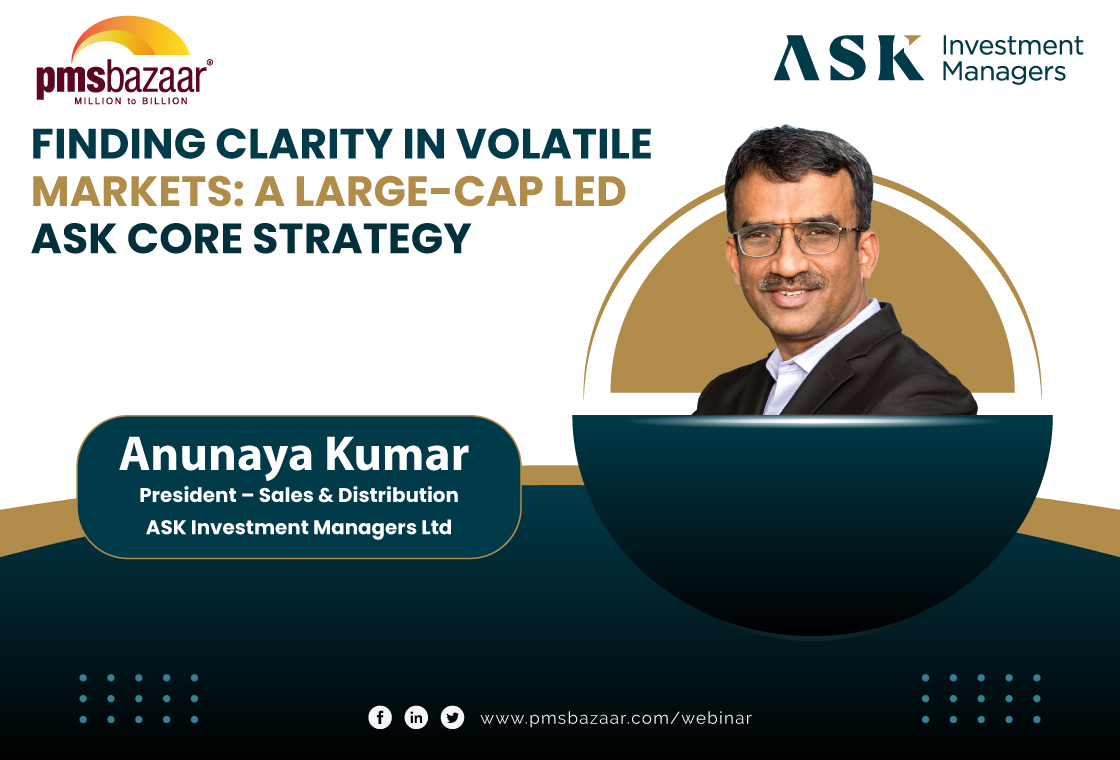
Finding Clarity in Volatile Markets: A Large-Cap Led ASK CORE Strategy
PMS Bazaar recently organized a webinar titled “Finding Clarity in Volatile Markets: A Large-Cap Led ASK CORE Strategy,” which featured Mr.Anunaya Kumar, President – Sales and Distribution ASK Investment Managers Limited. This blog covers the important points shared in this insightful webinar.
.jpg)
Passively Active Investing — A Modern Investor’s Lens on ETF-Based PMS
PMS Bazaar recently organized a webinar titled “Passively Active Investing — A Modern Investor’s Lens on ETF-Based PMS,” which featured Mr. Karan Bhatia, Co-Founder and Co-Fund Manager , Pricebridge Honeycomb ETF PMs. This blog covers the important points shared in this insightful webinar.
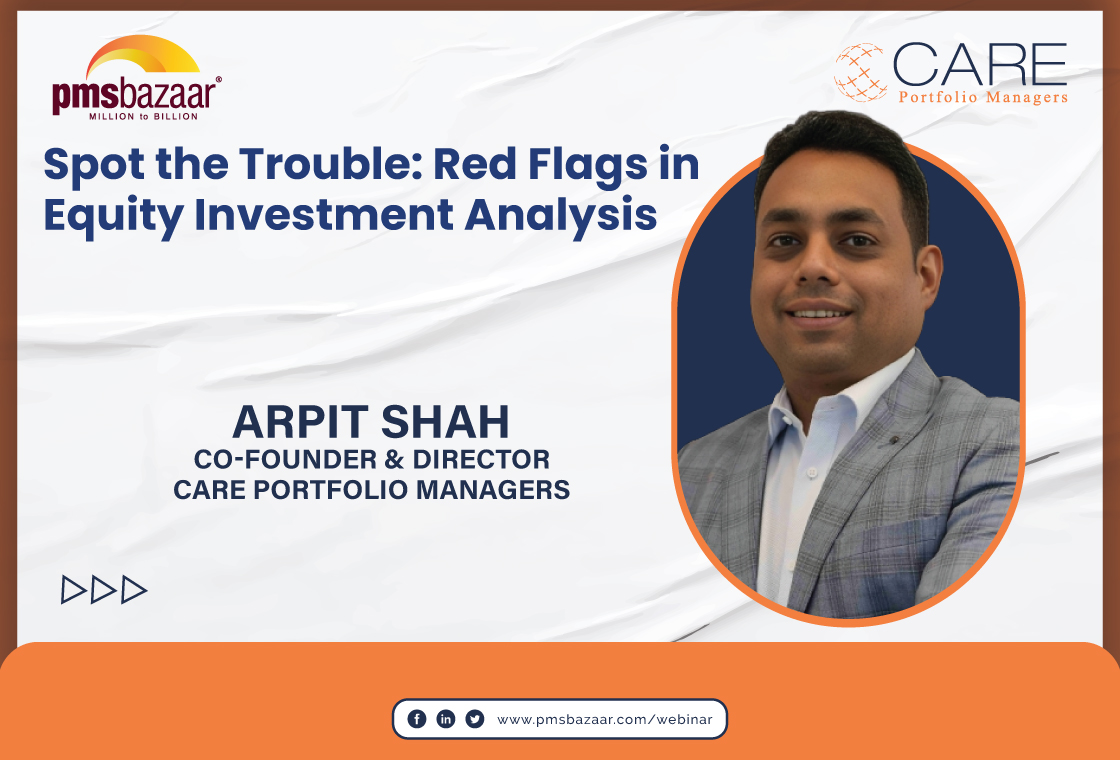
Spot the Trouble: Red Flags in Equity Investment Analysis
PMS Bazaar recently organized a webinar titled “Spot the Trouble: Red Flags in Equity Investment Analysis,” which featured Mr. Arpit Shah, Co-Founder & Director, Care Portfolio Managers. This blog covers the important points shared in this insightful webinar.

Long-Only AIFs Rebound Sharply in October; Long-Short Strategies Lag Despite Lower Volatility
106 long-only AIFs averaged 3.68% vs 32 long-short AIFs at 2.7%; only 24–31% of funds beat key indices

Markets log strongest monthly gains in 7 months; PMS performance turns near-uniform in October
Nifty 50 TRI gained 4.62%, BSE 500 TRI rose 4.27%; 415 of 427 equity PMSes ended positive
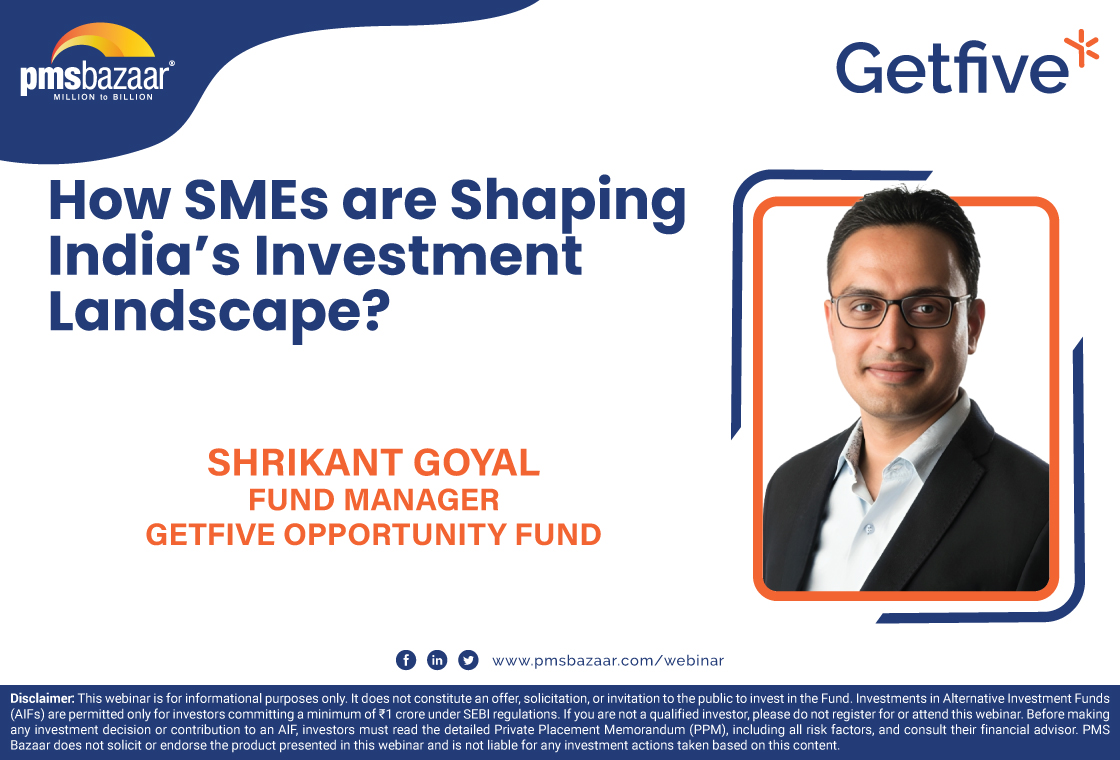
How SMEs are Shaping India’s Investment Landscape?
PMS Bazaar recently organized a webinar titled “How SMEs are Shaping India’s Investment Landscape?” which featured Mr. Shrikant Goyal, Fund Manager, GetFive Opportunity Fund.
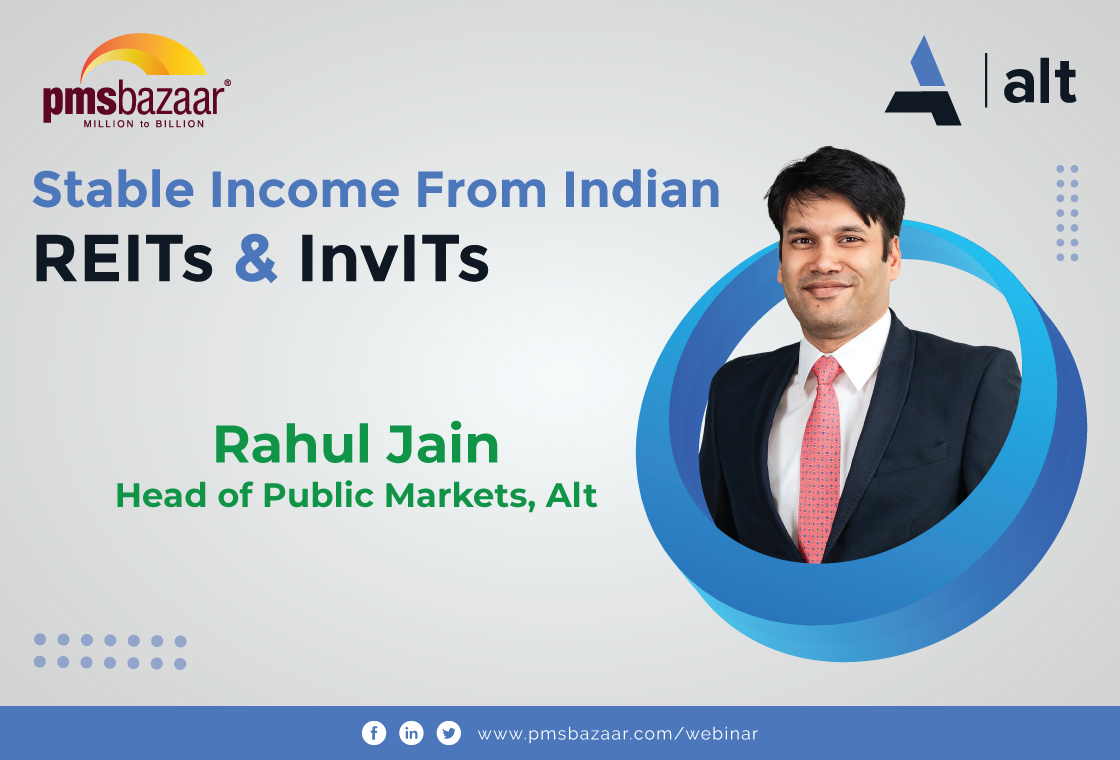
Stable Income from Indian REITs and InvITs
PMS Bazaar recently organized a webinar titled “Stable Income from Indian REITs and InvITs,” which featured Mr. Rahul Jain, Head of Public Markets, Alt.

